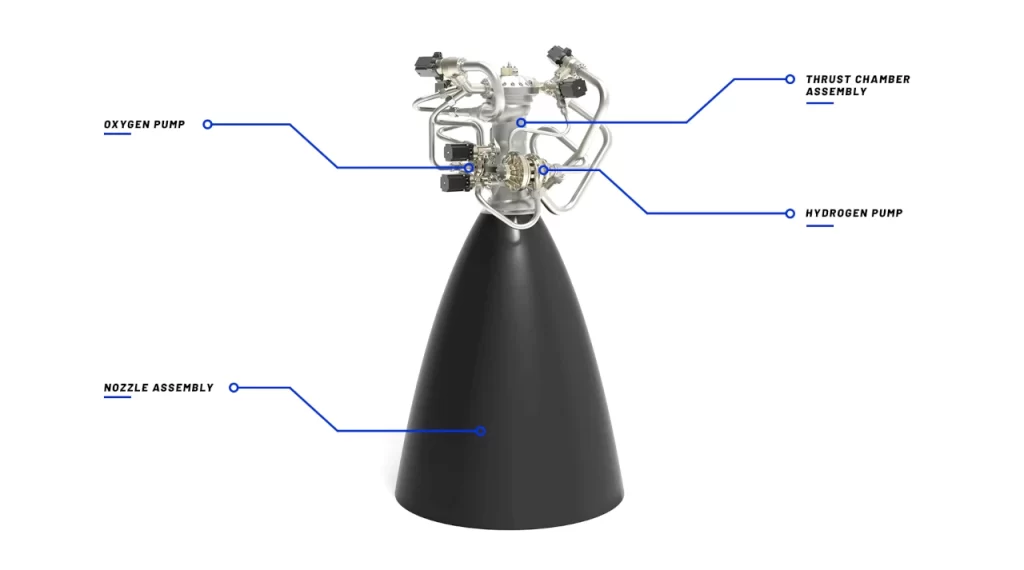On May 9, 2019, the creator of the American company Blue Origin Company, Jeff Bezos, unveiled the Blue Moon cargo variant, the company’s lunar landing module, after three years of development.
Blue Origin is developing the Blue Moon lunar lander cargo variant as part of its broader programme to organise missions to the Moon. The Blue Moon could facilitate transportation to the lunar surface.
The Blue Moon was meant to deliver freight weighing up to 3.6 tonnes. Simultaneously, the company revealed the development of a more powerful version of the module, capable of carrying loads weighing up to 6.5 tonnes and suited for bringing people to the Moon.
NASA awarded Blue Origin a NextSTEP-2 Appendix P Sustaining Lunar Development (SLD) contract on May 19, 2023. Blue Origin and its National Team partners will build and launch a lunar lander capable of landing precisely any place on the Moon’s surface and a cislunar transporter under this contract. The LOX-LH2 engine powers these vehicles. LOX-LH2’s high specific impulse gives a significant advantage for high-energy distant space missions.
Logically, Blue Origi’s powerful Liquid oxygen and hydrogen BE-7 engine is expected to power the Lunar Lander. The BE-7 engine was unveiled in 2019 along with the Blue Moon.
According to Brent Sherwood, vice president of advanced development programmes at Blue Origin, deep-space manoeuvres and lunar landings are ideal for the BE-7, a turbomachinery-based engine powered by the most efficient fuels.
As mentioned, the BE-7 engine uses a combination of liquid hydrogen LH2 and liquid oxygen propellants LOX, which were chosen precisely for their ability to ensure precise landings on the lunar surface. These fuels provide excellent performance and allow the engine to alter its thrust levels effectively.
Because of their beneficial qualities, rocket engines often use liquid hydrogen and liquid oxygen. Liquid hydrogen is a very efficient fuel with high thrust and specific impulse (a measure of propellant efficiency). Furthermore, hydrogen is abundant and cheaply obtained. On the other hand, liquid oxygen acts as a powerful oxidant, delivering the oxygen required for hydrogen fuel burning. This combination produces a tremendous chemical reaction, propelling the rocket forward.
Deep throttle capability becomes critical for precision lunar landings when using this propellant combination in the BE-7 engine. The engine’s capacity to regulate its thrust level over a wide range is called deep throttle ability. This is critical for conducting precise and controlled landings on the Moon’s surface, as the engine must produce enough thrust to slow the spacecraft and ensure a gentle descent. The BE-7 engine can precisely alter its thrust levels by using liquid hydrogen and liquid oxygen propellants, allowing for fine-tuned control during lunar descent and landing procedures.

The creation of the BE-7 engine represents a significant milestone in supporting sustainable lunar exploration, and it coincides with the company’s wider goal of enabling a future in which millions of people can build communities and engage in activities beyond Earth.
The BE-7 engine, which is still in development, employs an expander cycle. This unique cycle, widely recognised for its effectiveness in cryogenic engines, is a mechanism used to maximise engine performance by using available propellants efficiently.
An expander cycle is a rocket engine propulsion system using cryogenic fuels such as liquid hydrogen and oxygen. A tiny fraction of the cryogenic fuel, usually liquid hydrogen, is diverted from the main propellant flow and passed through a heat exchanger in an expander cycle. This heat exchanger takes heat from the surrounding environment or the engine’s combustion chamber, allowing the redirected fuel to vaporise and convert to high-pressure gas. The high-pressure gas is then expanded by a turbine, which drives a pump that delivers fuel to the combustion chamber. This procedure aids in the cooling of the turbine and allows for more efficient use of the fuels, resulting in improved engine performance. As a result, the expander cycle is noted for its great efficiency and is frequently chosen for its ability to use cryogenic propellants in rocket engines effectively.
The engine is designed to produce 40 kilonewtons or roughly 10,000 pounds of thrust. It was developed with the capacity to accurately change its thrust levels, allowing it to go as low as 10% of its maximum thrust.
Blue Origin will design, fabricate, and operate solar-powered 20-degree Kelvin cryocoolers and the other necessary technologies to avert LOX-LH2 boil-off under the SLD.
Blue Origin’s BE-7, which is based on their Blue Moon idea, is meant to be used in the descent stage of NASA’s Human Landing Programme. In addition, it will provide power to the transfer element, which will propel the lander from a highly elliptical near-rectilinear halo orbit around the Moon to a low lunar orbit. Northrop Grumman leads this element based on its Cygnus spacecraft.
Storable LH2 will be of immense utility to future missions beyond the Moon and enable capabilities like high-performance nuclear thermal propulsion. Additionally, Blue Origin’s architecture makes preparations for the possibility that LOX and LH2 propellants may be manufactured on the Moon using lunar ice.
